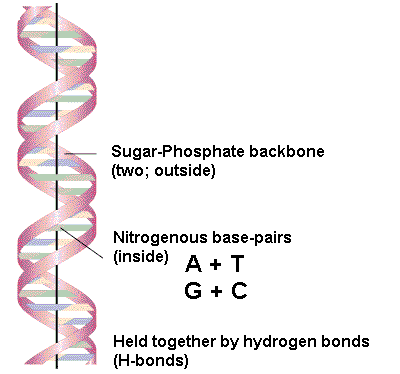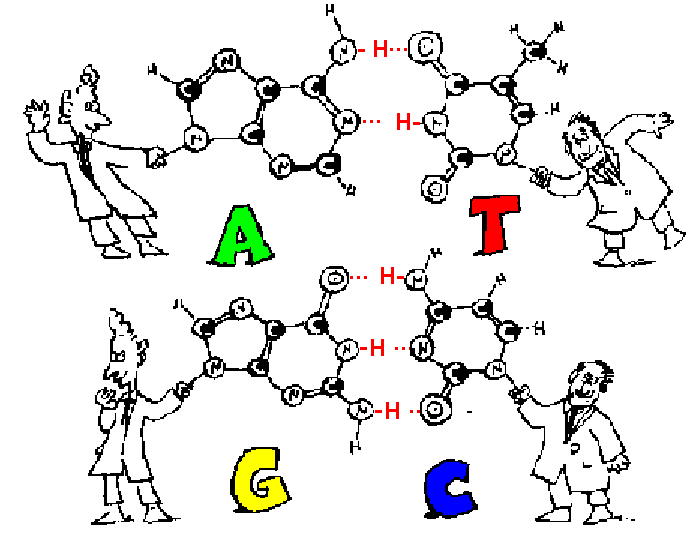

The Watson-Crick Model of DNA
(1953)
Deoxyribonucleic Acid (DNA) is a double-stranded,
helical
molecule. It consists of two sugar-phosphate backbones on the outside, held
together by hydrogen bonds between pairs of nitrogenous bases on the
inside. The bases are of four types (A,
C, G,
& T): pairing always
occurs between A & T,
and C &
G. James Watson (1928 - ) and Francis Crick (1916 - 2004) realized that these pairing rules
meant that either strand contained all the information necessary to
make a new copy of the entire molecule, and that the aperiodic
order of bases might provide a "genetic code".
Watson and
Crick shared the Nobel
Prize in 1962 for their discovery, along with
Maurice Wilkins (1916 - 2004),
who had continued research to provide a large body of
crystallographic data supporting the model. Working
independently, Rosalind
Franklin (1920 - 1958) and her student Raymond
Gosling had earlier produced the first definitive
crystallographic photo of a helical structure. Crick went on
to do fundamental work in molecular biology and neurobiology.
Watson become Director of the Cold Spring Harbor Laboratory,
and headed up the Human
Genome Project in the 1990s.